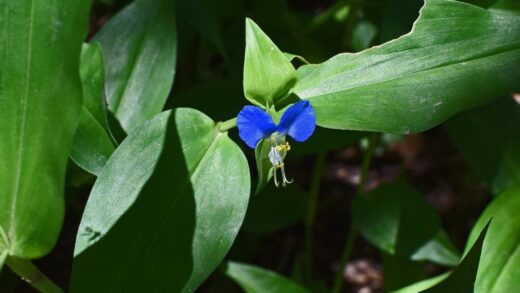The Scots pine is a testament to nature’s ability to thrive in adversity, having evolved to flourish on the lean, acidic, and often infertile soils of its vast native range. This inherent adaptation means that in a typical landscape environment, it has modest nutrient requirements and often performs best with minimal human intervention. Fertilizing a Scots pine is not a routine task and should be approached with caution and based on clear evidence of a need. Applying fertilizers unnecessarily or incorrectly can disrupt the tree’s natural balance, leading to weak, succulent growth, increased susceptibility to pests, and potential harm to the surrounding environment. A successful nutrient management strategy, therefore, prioritizes a healthy soil ecosystem and relies on fertilization only as a corrective measure for specific, identified deficiencies.
The foundation of proper nutrient management for a Scots pine is a thorough understanding of its soil. Before ever considering a fertilizer bag, a professional soil test is the most valuable tool at your disposal. This analysis provides precise information about the soil’s pH and the levels of essential macronutrients and micronutrients. Scots pines unequivocally prefer acidic soil, typically with a pH between 5.0 and 6.0. In soils with a higher pH, the tree’s ability to absorb crucial nutrients like iron and manganese is severely hampered, even if those nutrients are present in the soil. This often leads to chlorosis, a yellowing of the needles, which is a common symptom of nutrient imbalance.
In most cases, a healthy Scots pine can obtain all the nutrients it needs from the natural decomposition of organic matter in the soil. A layer of organic mulch, such as pine needles or shredded bark, over the root zone mimics the forest floor environment. As this mulch breaks down, it slowly releases a steady supply of nutrients, improves soil structure, and helps to maintain the acidic pH that pines prefer. This simple, natural approach is often sufficient to meet the tree’s complete nutritional needs throughout its life, making supplemental fertilization redundant.
When fertilization is deemed necessary based on a soil test or clear visual symptoms of a deficiency, the choice of product and the timing of application are critical. A slow-release granular fertilizer formulated for acid-loving plants is the most appropriate choice. These fertilizers provide a gentle, sustained release of nutrients that aligns with the tree’s slow and steady growth habit. It is crucial to avoid high-nitrogen fertilizers that promote rapid, lush growth, as this new growth is often weak, susceptible to insect damage, and less hardy in winter conditions. The goal is to correct a deficiency, not to force unnatural growth.
Essential macronutrients for pine health
Macronutrients are the elements that plants require in the largest quantities for healthy growth and development. For the Scots pine, the three primary macronutrients—nitrogen (N), phosphorus (P), and potassium (K)—play distinct and vital roles. Nitrogen is a fundamental component of chlorophyll, the pigment that drives photosynthesis, and is therefore essential for the vibrant green color of the needles and for overall vegetative growth. However, an excess of nitrogen can be particularly detrimental to pines, causing them to produce long, weak shoots that are prone to damage from wind, snow, and pests. A balanced approach to nitrogen is therefore crucial.
More articles on this topic
Phosphorus is critical for energy transfer within the plant and plays a central role in root development, flower and seed production, and overall maturation. A sufficient supply of phosphorus is especially important for young, establishing trees as they develop the robust root system that will support them for their entire lives. In many soils, phosphorus can be present but unavailable to the plant if the soil pH is too high or too low. Maintaining the correct acidic pH is therefore key to ensuring the pine can access the phosphorus it needs for strong, healthy establishment.
Potassium is often referred to as the “quality” nutrient, as it is involved in a wide range of regulatory functions within the plant. It helps to regulate the opening and closing of stomata, which controls water loss, making it crucial for drought tolerance and overall hardiness. Potassium also strengthens cell walls, improves the tree’s resistance to diseases, and is vital for its ability to withstand extreme cold and other environmental stresses. A deficiency in potassium can lead to weak branches, poor needle retention, and a general decline in the tree’s resilience.
While these three are the primary macronutrients, pines also require secondary macronutrients like calcium (Ca), magnesium (Mg), and sulfur (S) in significant amounts. Calcium is important for cell wall structure, while magnesium is a central component of the chlorophyll molecule. Sulfur is a key ingredient in some amino acids and proteins. In most cases, these secondary macronutrients are sufficiently available in the soil. A comprehensive soil test is the only way to accurately determine if a deficiency in any of these essential macronutrients exists and warrants a corrective application of fertilizer.
The role of micronutrients
While required in much smaller quantities than macronutrients, micronutrients are just as essential for the health and proper functioning of a Scots pine. A deficiency in any single micronutrient can lead to significant health problems, stunted growth, and visible symptoms such as discolored foliage. These elements, including iron, manganese, zinc, copper, and boron, act as catalysts for many of the plant’s vital enzymatic processes. They are the spark plugs of the tree’s metabolism, enabling the complex biochemical reactions necessary for life.
More articles on this topic
Iron (Fe) is one of the most critical micronutrients for pines and is a common source of deficiency, particularly in soils with a pH above 6.5. Although iron is not part of the chlorophyll molecule itself, it is essential for its synthesis. An iron deficiency, therefore, manifests as iron chlorosis, where the newest needles at the tips of the branches turn a pale yellow or even whitish color, while the older needles remain green. Because iron is immobile within the plant, the symptoms always appear on the new growth first. This is a classic diagnostic sign.
Manganese (Mn) is another micronutrient whose availability is highly dependent on soil pH, and its deficiency symptoms can be very similar to those of iron chlorosis. It also plays a role in photosynthesis and other metabolic processes. Distinguishing between iron and manganese deficiency often requires a soil test or a foliar nutrient analysis. In some cases, a high level of one of these nutrients can interfere with the uptake of the other, creating a complex nutritional imbalance. Correcting the soil pH is often the most effective long-term solution for both iron and manganese deficiencies.
Other micronutrients like zinc (Zn), copper (Cu), and boron (B) are also vital. Zinc is involved in the production of growth hormones, and a deficiency can lead to stunted growth and small, misshapen needles. Boron is important for cell wall formation and for the transport of sugars within the plant. While deficiencies in these other micronutrients are less common, they can occur, especially in very sandy soils where nutrients are easily leached away. Again, a soil test is the best guide for identifying and correcting these specific issues, often through the application of a specialized micronutrient fertilizer blend.
Soil testing and analysis
A professional soil test is the indispensable first step in any responsible nutrient management program for a Scots pine. It is a scientific process that moves beyond guesswork and provides concrete data about the chemical and physical properties of your soil. Without a soil test, any application of fertilizer is a shot in thedark, with a significant risk of applying the wrong nutrients, applying too much of a nutrient that is already abundant, or failing to address the actual limiting factor for the tree’s health. The small investment in a soil test can save you from costly and potentially harmful mistakes.
A standard soil test from a reputable laboratory will provide several key pieces of information. The most important of these for a Scots pine is the soil pH, which measures the acidity or alkalinity of the soil. This single value determines the availability of almost all essential nutrients. The report will also detail the levels of major macronutrients (phosphorus, potassium), secondary macronutrients (calcium, magnesium), and key micronutrients (iron, manganese, zinc). Furthermore, it will typically include an analysis of the soil’s organic matter content and an estimate of its texture (e.g., sandy, loamy, clay).
To take a proper soil sample, you will need to collect soil from several locations within the tree’s root zone, which extends well beyond the drip line. Using a clean trowel or soil probe, collect soil from a depth of about 15 to 20 centimeters. Combine these multiple sub-samples in a clean bucket and mix them thoroughly to create a single, representative composite sample. This ensures that the test results reflect the overall condition of the soil where the tree is feeding, rather than an anomaly in a single spot. Most soil testing labs will provide a collection kit with specific instructions on how to gather and submit your sample.
Interpreting the results of the soil test is the final step. The lab report will not only show the current levels of nutrients but will also typically provide recommendations for amendment. For a Scots pine, if the pH is too high (alkaline), the recommendation will likely involve applying elemental sulfur or an acidifying fertilizer to gradually lower the pH. If a specific nutrient is deficient, the report will recommend the type and amount of fertilizer to apply to correct the issue. Following these professional, data-driven recommendations is the safest and most effective way to manage your pine’s nutritional health.
Choosing the right fertilizer
When a soil test confirms that fertilization is necessary, selecting the appropriate product is paramount. For Scots pines, the best choice is almost always a slow-release, granular fertilizer specifically formulated for acid-loving trees and shrubs. These products are designed to provide a steady, controlled supply of nutrients over an extended period, which aligns with the pine’s natural growth cycle. Look for fertilizers that derive their nitrogen from slow-release sources, and avoid fast-release, high-nitrogen formulations like lawn fertilizers, which can cause a flush of weak growth that is undesirable for pines.
The N-P-K ratio, which represents the percentage of nitrogen, phosphorus, and potassium in the fertilizer, is a key consideration. A balanced fertilizer with a ratio like 10-10-10 might be appropriate for addressing general deficiencies in poor soil. However, if the soil test indicates a specific need—for example, sufficient nitrogen but low phosphorus—you would look for a fertilizer with a ratio that reflects that, such as 5-10-5. If the primary issue is an alkaline soil pH causing chlorosis, an acidifying fertilizer that includes sulfur and chelated iron would be the most effective choice. Chelated iron is a form that remains available to the plant even in higher pH soils.
Organic fertilizer options can also be an excellent choice for Scots pines. Composted manure, fish emulsion, or specialized organic blends for evergreens provide nutrients in a slow-release form and also contribute to improving the overall soil health by adding organic matter. These organic sources support the soil microbial community, which in turn helps to make nutrients more available to the tree. While they may act more slowly than synthetic fertilizers, they provide long-term benefits to the soil ecosystem, creating a more sustainable and resilient environment for the pine.
Regardless of the type chosen, it is crucial to follow the application rates recommended on the product label. The temptation to apply a little extra in the belief that “more is better” can be very harmful. Over-fertilization can burn the tree’s roots, lead to nutrient imbalances in the soil, and contribute to nutrient runoff that can pollute local waterways. The correct approach is to apply the recommended amount based on the size of the tree or the area of the root zone, ensuring a safe and effective application.
Application techniques and timing
The timing of fertilizer application is just as important as the choice of fertilizer itself. The optimal time to fertilize a Scots pine is in the early spring, just as the buds begin to swell and new growth starts. Applying nutrients at this time ensures they are available to the tree when its metabolic activity is increasing and it is entering its most active period of growth. This allows the tree to make efficient use of the nutrients for developing strong new shoots, needles, and roots throughout the growing season.
Fertilizing in the late summer or autumn should be strictly avoided. An application of nutrients, especially nitrogen, during this period can stimulate a late-season flush of growth. This new, tender growth will not have enough time to properly harden off before the arrival of cold winter weather. As a result, it is highly susceptible to frost damage, winter burn, and dieback, which can stress the tree and create entry points for disease. Late-season fertilization interferes with the tree’s natural process of slowing down and preparing for dormancy.
The correct technique for applying a granular fertilizer is to broadcast it evenly over the entire root zone of the tree. The roots of a pine extend far beyond the spread of its branches, so you should apply the fertilizer from about 30 centimeters away from the trunk out to and slightly beyond the drip line. Never pile fertilizer against the base of the trunk, as this can cause chemical burns to the bark and surface roots. For larger trees, a handheld or push-type broadcast spreader can help to ensure a uniform application over the large root area.
After spreading the fertilizer, it is beneficial to gently rake it into the top few centimeters of soil or mulch. This helps to bring the granules into contact with the soil and reduces the risk of them being washed away by heavy rain. The final and most critical step is to water the area thoroughly. Watering in the fertilizer dissolves the granules and carries the nutrients down into the soil profile where they can be absorbed by the tree’s roots. Without this final watering, the fertilizer will simply sit on the surface and be ineffective.
📷 Arnstein Rønning, CC BY 3.0, via Wikimedia Commons


















